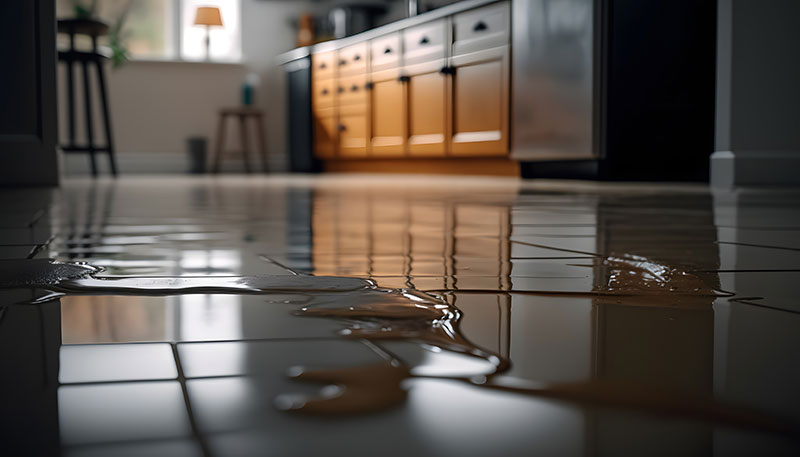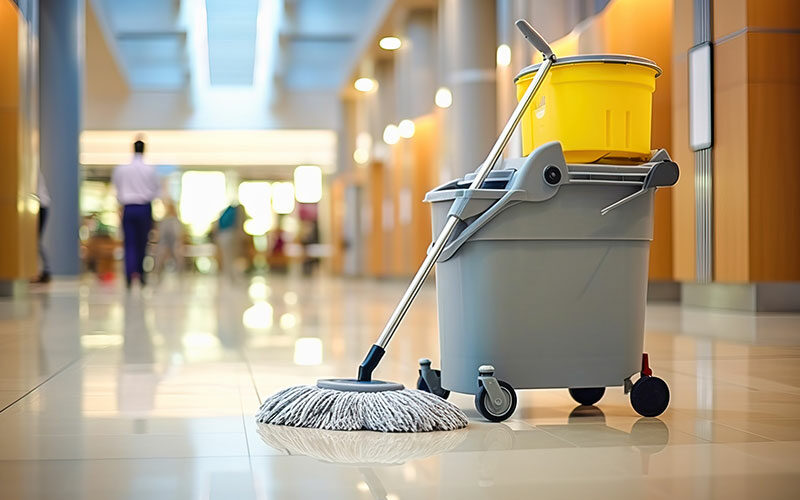Advertisement
Tile flooring is an excellent choice for high-traffic areas due to its durability and ease of maintenance. Yet, the constant foot traffic can dull your shiny floors, revealing every scuff and smear. To keep your tile floors looking as pristine as when first installed, a dedicated maintenance regimen is essential.
Recognize the unique challenges of maintaining tile flooring in bustling spaces. These surfaces are thoroughfares for dirt and grit and crucial to your home or business décor—an investment that deserves careful attention.
With proper techniques, you’ll not only clean but also extend the lifespan and beauty of your tile floors. Your journey from dull to dazzling flooring begins now.
- Embrace Routine Cleaning
In areas where tile floors see frequent use, consistent cleaning is indispensable. Start by sweeping or vacuuming daily to remove particles that can scratch the surface. If you’re wondering how to clean porcelain tile floors, remember that gentle cleaning is vital.
Use a damp mop with a pH-neutral cleaner weekly to clean effectively without damaging the tile’s finish. Avoid ammonia-based products and scouring powders, as they can reduce the tile’s luster. For stains, gently scrub with a soft brush and the same pH-neutral solution.
It’s crucial to wring out the mop well to prevent excess water from weakening the grout. After mopping, dry the floor promptly with a clean cloth to prevent water spots. Regular attention prevents the buildup of grime and simplifies deep cleaning.
- Tackle Stains Head-On
Immediate response to spills is vital to prevent them from setting. Acidic substances like wine and tomato sauce can damage tile. Blot spills to absorb the liquid, then clean the area with a pH-neutral cleaner.
Apply a poultice of baking soda and water for stubborn stains, leave it overnight, and then rinse it away to be effective. For more stubborn marks like ink, rubbing alcohol or hydrogen peroxide can be used. Always test the cleaner on a small, inconspicuous tile area first to prevent damage.
Quick action is crucial for stain removal. The longer a stain lingers, the more difficult it is to remove. Regular spot cleaning will help prevent stains from becoming permanent fixtures.
- Protect Your Investment
Tile flooring is durable but not indestructible. Place rugs or mats at busy entrances to capture dirt and choose non-skid options to prevent slips.
Furniture can also damage tiles, so attach felt pads to chair and table legs. Use protective coasters under heavy furniture to distribute the weight and prevent cracking. When moving heavy items, lift rather than drag them to avoid scratching or chipping the tile.
- Address The Grout
Due to its porous nature, grout requires regular cleaning. Use a specialized grout cleaner and a small brush for routine scrubbing. Avoid bleach, which can weaken grout over time.
Sealing grout is imperative, ideally done annually or more frequently in high-traffic areas, to ward off stains and make cleaning easier. For already discolored grout, a grout stain pen can offer a temporary fix but should complement regular cleaning for the best appearance.
- Implement Deep Cleaning Sessions
Regular maintenance is fundamental, but deep cleaning periodically is necessary to restore your tile’s shine. Consider using a steam cleaner to reach the dirt that daily cleaning misses. For an eco-friendly choice, opt for steam with distilled water.
Alternatively, mixing equal parts water and vinegar can effectively remove grime. Rinse thoroughly afterward to avoid leaving any residue. Consider professional services for a deep clean, especially for challenging grout stains, if DIY methods fall short.
- Utilize Appropriate Cleaning Tools
Choosing the correct tools is critical for floor maintenance. Microfiber mops are ideal for their soft cleaning action. Avoid abrasive materials like steel wool to prevent scratching the tile.
Consider a steam mop for a deep clean that foregoes harsh chemicals or a nylon-bristle brush for tenacious grout stains. Choose vacuums with a hard floor setting to collect debris without scuffing the tile, and avoid those with a beater bar, which can be too abrasive.
- Choose Safe Cleaning Agents
Choose a cleaner that is safe for your tile, one that matches the pH requirements. Harsh chemicals can dull the finish, and although vinegar is a standard recommendation, it can leave a film. Verify the cleaner’s suitability for your specific type of tile.
Steer clear of oil-based cleaners on ceramic or porcelain tile to prevent slip hazards. For stone tiles, use cleaners formulated specifically for stone to avoid etching.
- Regularly Inspect and Repair
Inspect your tile periodically for any damage. Quickly mend chips or cracks to prevent deterioration.
Monitor the grout’s condition and reapply sealant as necessary to shield against moisture and dirt. Consistent repairs keep your tile flooring secure and looking good, helping you avoid costly replacements.
In Conclusion

Thorough cleaning and careful maintenance will keep your tile flooring in high-traffic areas not only functional but also beautiful. By adopting these practices, you’ll protect your investment and ensure your tile continues to leave a lasting impression.

